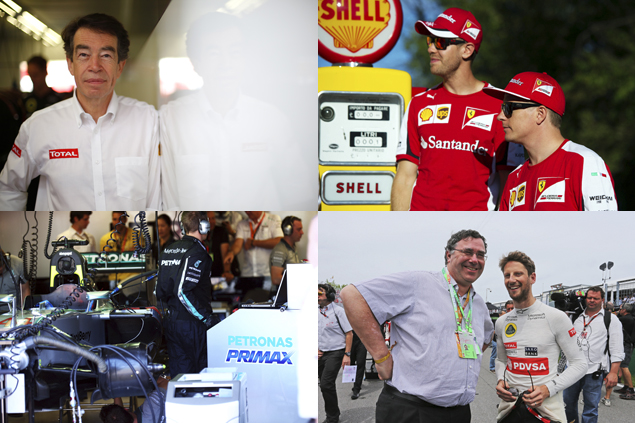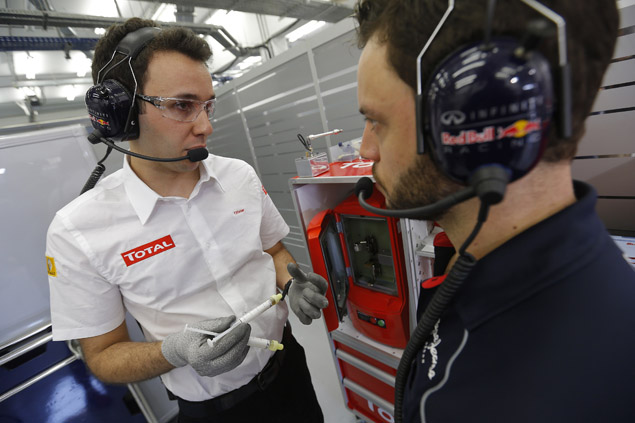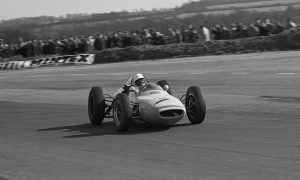HIGH-OCTANE PARTNERSHIPS
Girard further explains how Total is constantly sharing data with its supplied engine manufacturer in order to come up with the perfect mixture.
“To that end, we need a combustion chamber that allows us to study flame propagation in representative conditions. However, this does not mean we have the actual Renault power unit inside our walls. Instead, we have a ‘static chamber’ in our R&D facilities in Solaize.
“Thanks to it, we can see how fast the flames propagate, and make sure all the mixtures ignite properly. However, when we need to study engine knocking and understand why and when this phenomenon happens, we use the Cooperative Fuel Research (CFR) engine and measure octane rating.
“Once we reach the right balance and compromise, we send the product to Viry-Châtillon [Renault Sport F1’s engine factory] for dyno testing on an actual engine. Renault sends us back the results, which we analyse, etc. In order to get the homologated fuel by the season-opening grand prix, we need to secure the formulation the previous October or November.”
The extremely close collaboration that exists between oil companies and power unit suppliers should not come as a surprise, considering that a fuel can theoretically fix an engine weakness, and open a new development path.
“If we had a miracle fuel that offsets knocking for instance, then Renault would design and develop an engine that would make the phenomenon happen much more quickly because this would suit the unit’s optimum performance conditions.
“Let’s say one of our competitors comes up with a fuel that burns a bit faster. This could increase rpms, while the engine could use an even leaner mixture. In 2015, some V6s were running at 12,500rpm, if not a bit more.
“To reach these rotational speeds with the 100kg/hour fuel flow restriction, the engine must be operated in ultra lean-burn mode. Although the fuel has been designed to burn at that rpm, the power unit itself must also withstand those conditions. It looks like some have actually achieved a breakthrough in that realm.”
Girard probably hints at the major power unit upgrade introduced by Mercedes at the 2015 Italian Grand Prix, and which does run at 12,500rpm thanks to Petronas’ latest fuel composition.
Fuel and lubricant technology has become increasingly instrumental in how much horsepower an F1 driver can unleash. Around 200 ingredients are accurately dosed to reach the perfect product and optimise energy efficiency, a very topical issue in a world of finite resources.








